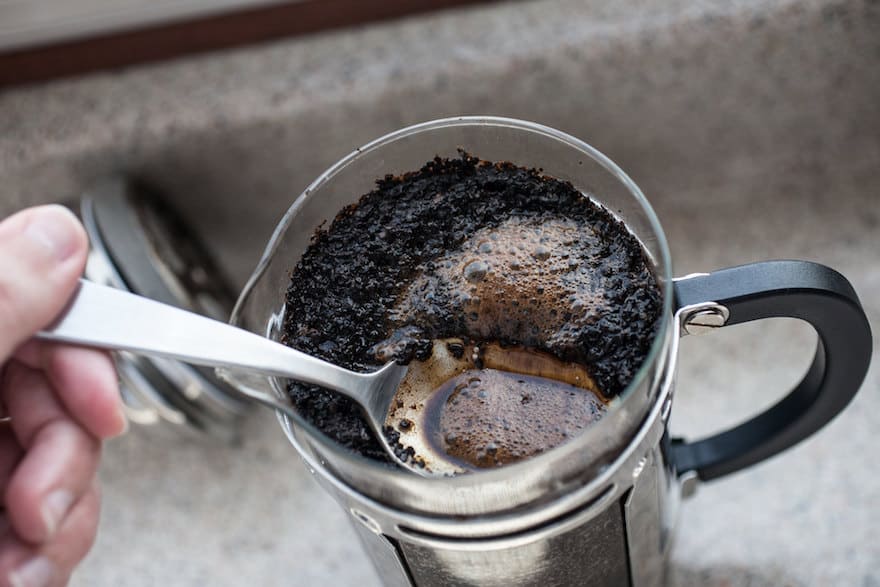Just so you know, as an Amazon Associate we earn from qualifying purchases made via bold red links, buttons or images.
Last Updated on December 13, 2023
Sometimes the best coffee is cold coffee, even in the winter if you’re a true coffee lover. Of course, there’s a big difference between iced coffee and cold brew coffee, and that difference makes cold brew coffee the next step to take in your coffee-tasting journey if you haven’t already.
Once you’ve mastered the cold brew method, then comes the next important choice: Which beans should you use?
If you’re looking for a quick answer, we aim to please. Coffee Bros. Cold Brew Blend are the beans we like best for cold brew:
We’re going to take a look at a few more beans further down this page. Although you can make cold brew from the same beans you use to brew regular cups of espresso, many brands market beans specifically for cold brew. We’ve found some of the best.
What it all comes down to is your personal taste and drink preference, but our bean-buying guide should help you decide.
Difference between cold brew and iced coffee
Believe it or not, ice cubes are not the distinguishing factor when it comes to iced coffee and cold brew. The difference in the subtle flavors that these two drinks yield lies in the technique and the brewing temperature.
Iced coffee is made as hot coffee, then cooled down. Cold brew coffee is made without any hot water at all—it’s not just a cold beverage. Iced coffee is traditionally brewed with hot water for quick extraction, whereas cold brew concentrate is brewed with cold water over a longer period of time.
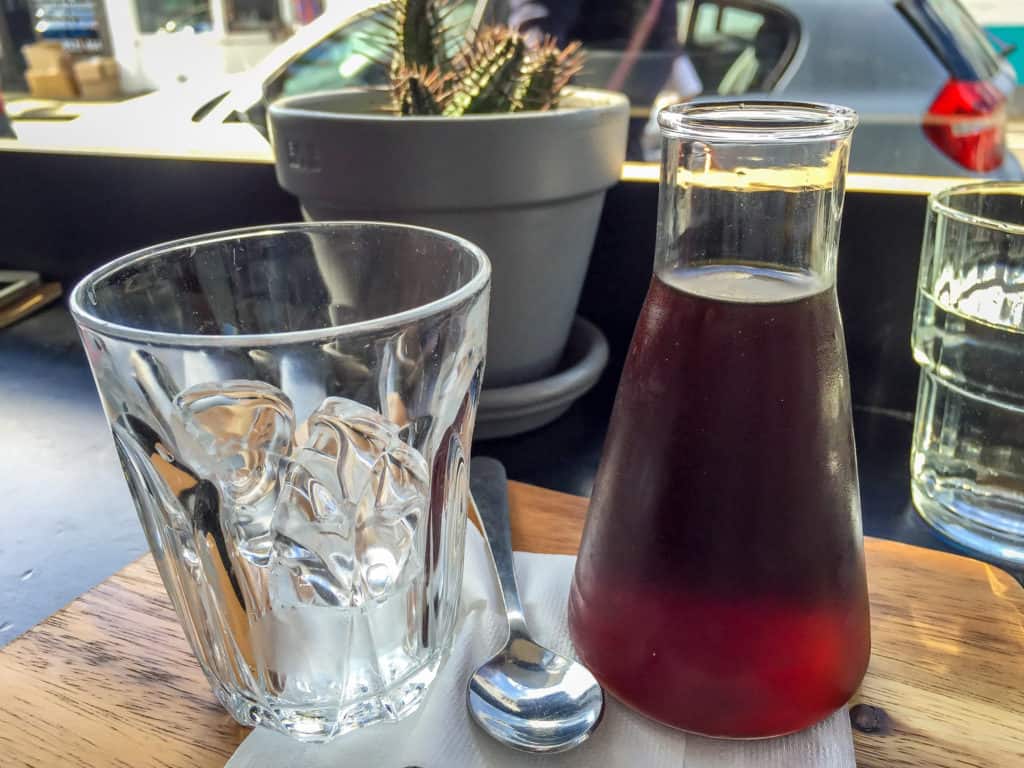
The cold brewing process involves coffee bean grinds being steeped in water for a long period of time—between 12-18 hours. Remember, the water needs to be cold or at room temperature, not hot or boiled. The result is a coffee that is less acidic, sweeter, and highly caffeinated!
Don’t be fooled by the cold exterior, cold brew coffee matches up to regular coffee and then some. It is also important to note that iced coffee is meant to be drunk as cold coffee, whereas cold brew coffee can be consumed cold or heated and consumed hot.
Cold brew coffee brewing method
Making cold brew is easy. All it takes is time. In fact, the brewing time for most cold brews will be around 12-18 hours. To brew coffee beans without a brew coffee maker, all you’ll need to follow is a four-step process:
- Grind your beans coarse.
- Add them to some room temperature or even cold water (for a longer time mind you).
- Let it steep in the water for 12-18 hours.
- Then, separate the grind from the water and there you have it—a tasty and strong cold brew concentrate!
Pre-ground coffee or coffee beans?
The question being posed here relates to the decision between getting beans pre-ground or grinding them yourself. You’ll hear it here and from many professional baristas that you want to grind your beans yourself. There are a few reasons for this.
The most important reason is the freshness and flavor of the beans. Pre-ground beans begin to lose flavor while they’re still sitting on the store shelf. It’s much more effective to get a grinder and do the grinding yourself. Whether it’s for a coarse grind or a finer one, you’ll also have the ability to customize your grind for different brewing methods.
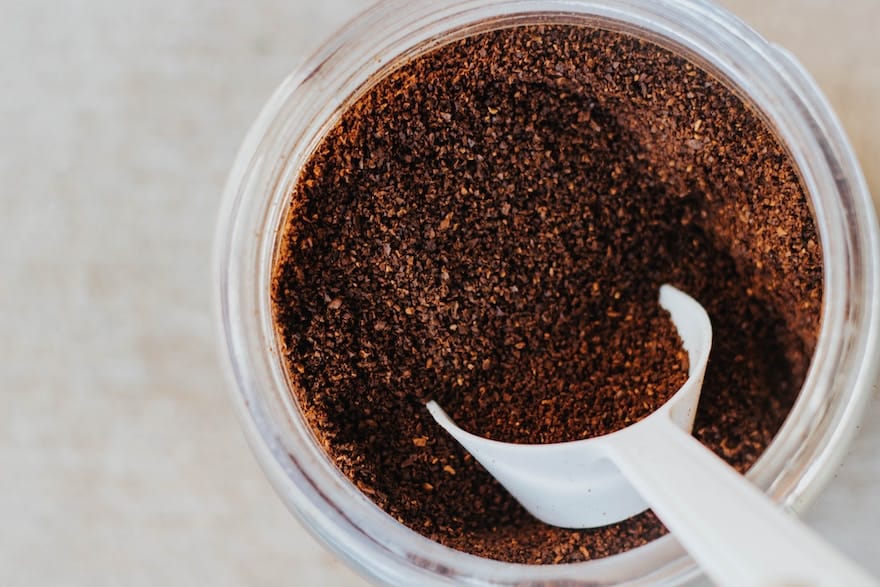
Here is a list of reasons as to why buying coffee beans and grinding them yourself is the way to go rather than opting for pre-ground coffee:
- Pre-ground coffee is sold at the same price as coffee beans.
- Coffee at the grocery store is most likely past its peak freshness, meaning it’s already going stale when you buy it.
- Grinding your own beans makes it possible to accommodate any type of brewing.
- You can adjust your grind to improve on any sour or bitter tasting cup of coffee.
Different types of coffee beans
When it comes to the various types of beans you can buy, flavors abound. From fruity to flowery to chocolatey, there is sure to be a flavor to suit your personal preferences.
Scientifically speaking, there are four primary types of coffee beans. By going through each of them, you might find the perfect type of coffee for you and your cold brew.
Arabica
This coffee is the most heavily marketed in North America, making it also the most popular. This coffee plant needs a moist environment to thrive and deliver those flavors they’re so well known for. Brazil supplies most of the world’s Arabica, given its rainforest climate, and Central America is also a big producer. The plants are quite delicate and require plenty of attention before harvest.
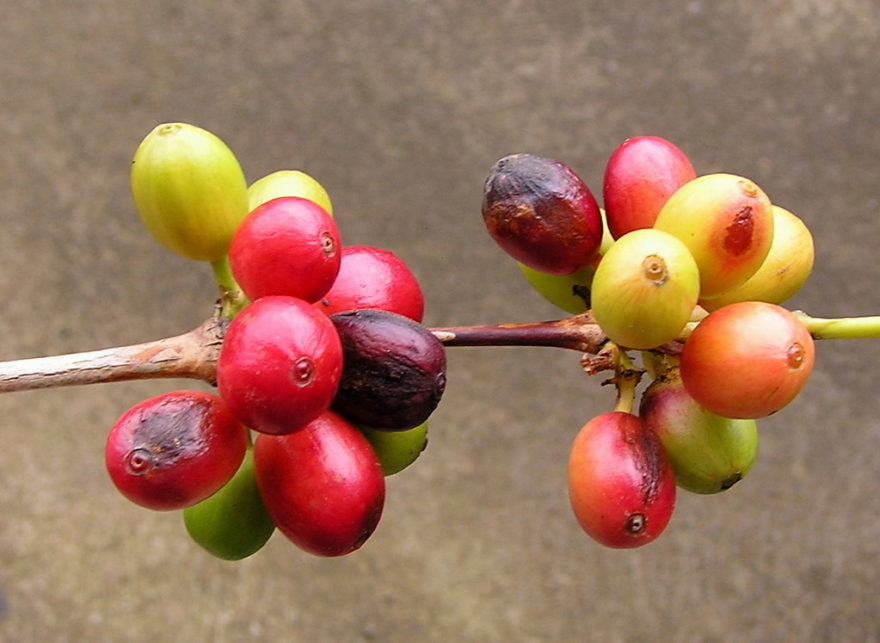
This attention to detail while farming Arabica also makes it the most expensive coffee on the market. The mellow flavor you get from Arabica tends toward sweet and smooth. Arabica is also known for chocolate flavors and hints of fruit and berries.
Robusta
Robusta is most popular in Europe, Africa, and the Middle East. It has a particularly robust flavor profile, and some companies combine it with Arabica to bring down the cost. This is a poor man’s way of getting a bag of beans together, but there are some single-origin Robusta beans out there for the connoisseur.
The flavor is more akin to an earthy taste with some bitterness and a nutty aftertaste. This grain-like flavor is a strong one, but also unique in its own way. Robusta-mixed products will be some of the cheapest you can find, and there’s a reason for that.
Robusta is really easy to farm and grow. It can withstand many types of environments, climates, and altitudes. Given the relative ease of producing this type of beans, it’s no wonder some coffee brands look to Robusta to help bring down production costs.
Liberica
This is one of the more rare types of beans that comes from the Philippines. The history behind Liberica’s rise on the worldwide market is interesting.
Back in the 19th century a fungus known as “coffee rust” set in, causing a short supply of Arabica which was the world’s leading coffee at the time. The Philippines—an American territory at the time—stepped up and began farming Liberica, filling the coffee void for the moment.
The taste that Liberica brings to the table is mineral and woody, with a rich flavor. Adept roasters have begun turning out versions sweet flavor more akin to Arabica, but chances are Liberica will always be associated with slightly bitter flavors.
Excelsa
Technically a member of the Liberica family, we thought this deserved its own mention given its distinct flavor profile and Southeast Asian origin. This is a bean that is sought out by coffee lovers for its unique acidic flavors, which are tartier and fruitier than those from other beans.
5 best coffee beans for cold brew
1. Coffee Bros. Cold Brew Blend
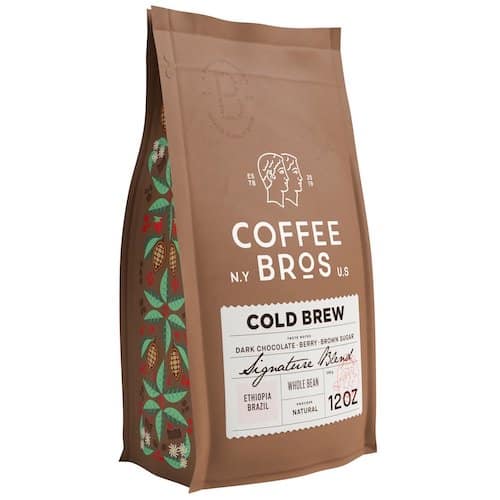
You don’t have to worry about finding the right type of balanced coffee beans if you can find a bag that is made specifically for cold brew. That’s the biggest upside to the Coffee Bros. Cold Brew Blend.
This company, established in 2019, is new and run by two brothers, hence the name.
Even though it’s not a single-origin, their sourcing prioritizes quality and everything is roasted with utmost care. This particular bag will feature flavors of dark chocolate, berry, and brown sugar. Sweet and rich is the name of the game when it comes to this coffee, which is among the best light roasts for cold brew.
Pros:
- Family-owned company that is New York-based.
- Flavor profile is poignant and is truly designed for cold brew.
Cons:
- Blend that is likely to contain beans from at least two countries.
- Intense smell from beans before brewing.
2. Intelligentsia Frequency Blend
Established in 1995, Intelligentsia is a company that produces well-balanced beans while remaining mindful of ethical coffee sourcing. Intelligentsia has trademarked their Direct Trade movement, which essentially means they’ve cut out the middle man and focus on building direct relationships with their growers.
The flavors you’ll find in their Frequency Blend are almond, dried fruity flavors, and chocolate notes. Their 100% Arabica medium roast is a single-origin from Brazil, which is pretty standard in the coffee world. The best thing about these beans is their versatility. You can blend them into anything you want. The roasting process brings out semi-bitter and citrus flavors that are great for regular drip coffee as well as the cold brew immersion method.
Pros:
- Well-balanced and can be used for any form of coffee.
- Thoughtfully sourced, with the establishment of Direct Trade for their production source.
- Inexpensive while remaining tasty and flavorful.
Cons:
- Be sure to buy from a trusted third-party source due to bags being sold with past roasting and freshness dates.
- May not taste as flavorful with other coffee brewing methods besides cold brew.
3. Koffee Kult Dark Roast
Koffee Kult Dark Roast is for those looking for an edge to their cold brew coffee. What better way than with a deep, dark roast coffee? The immersion method and longer brew time helps bring out these rich coffee flavors.
Koffee Kult is a family-owned business from Florida established in 2010 which sources beans from a bevy of places such as Brazil, Colombia, and Sumatra.
Their commitment to quality is admirable and reinforces their label as an artisan coffee company. The flavor profile of this dark roast highlights cocoa and cinnamon, with heavy body and a bright finish. The only thing that holds us back from claiming these artisan coffee beans as winners above all else is the equally artisan price.
Pros:
- Locally roasted in Hollywood, Fla.
- Family-owned with real hands-on attention to roasting.
- Solid taste and strength, making it perfect for a cold brew.
Cons:
- On the expensive side when it comes to beans.
- Not a single-origin.
4. Tiny Footprint Coffee Cold Brew Cold Press Elixir
As things get more precarious with our environment and climate change, it’s important for companies to do what they can to shrink their carbon footprint. Tiny Footprint Coffee is ahead of many others in this respect and puts the planet first while trying to provide a flavorful cup of cold brew coffee with their Cold Brew Cold Press Elixir.
This Minneapolis-based company donates a portion of its proceeds to help shrink its carbon footprint while also providing the math for any non-believers. The outcome itself is a reliable-tasting coffee that has fruity notes and floral aspects within a cocoa body, yielding a bold flavor with sweet notes.
Pros:
- Environmentally conscious; donates a portion of proceeds to help reforestation in Ecuador’s Mindo cloud forest.
- Local training and roasting in Minneapolis.
- A great karmic choice for the price and the taste.
Cons:
- Requires a coarse grind.
- A blend rather than single-origin beans.
5. Cold Brew Lab Organic Coarse Ground Coffee
Though we don’t suggest you buy your coffee grounds pre-ground, nevertheless you should be aware of good companies that can deliver a fine-tasting coffee as such. Cold Brew Lab is a New York-based company that sources its 100% Arabica beans from Colombia.
They don’t cite any fair trade or direct trade agreements with their growers, and perhaps that’s the tradeoff for the more affordable price. The flavor of their dark roast cold brew is well-rounded with good balance and a smooth taste.
Pros:
- Artisan coffee roaster based in New York that provides single-origin coffee.
- Comes coarsely ground for those not interested in grinding their own beans.
- Bold and unique notes available at the price of mass-marketed coffee bean brands.
Cons:
- You might still prefer to get the whole bean instead of the extra coarse grind.
- Bags don’t seem ideally designed to ensure freshness.
Our favorite cold brew coffee
It goes without saying that these five coffee companies can deliver truly tasty and flavorful outcomes for you when you brew at home. Each has its own ups and downs.
Forced to choose, we’d go with Coffee Bros. Cold Brew Blend. It comes at an agreeable price, promotes freshness with the delivery of their beans, and specializes in flavors designed to flourish under the cold brew method.
They roast locally, you’ll be supporting a family business, and buying from a company that takes great care with its sourcing.

